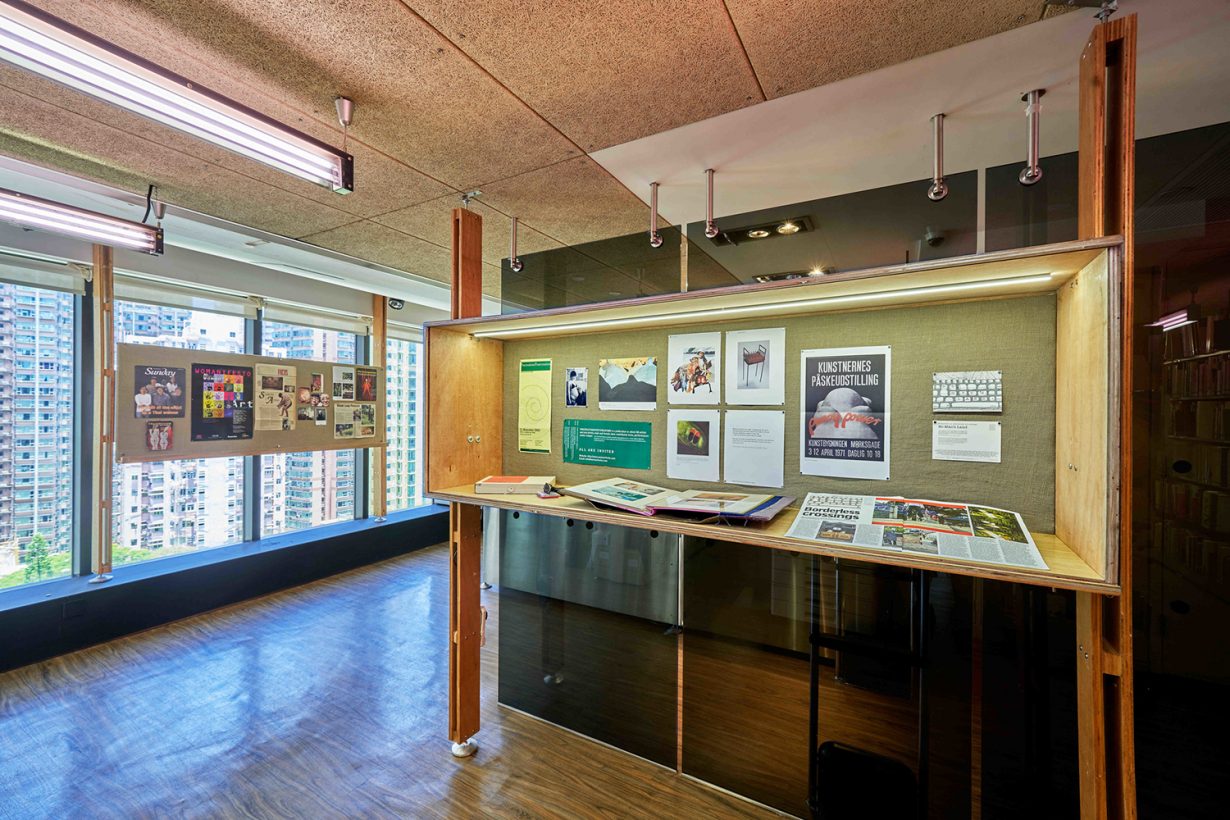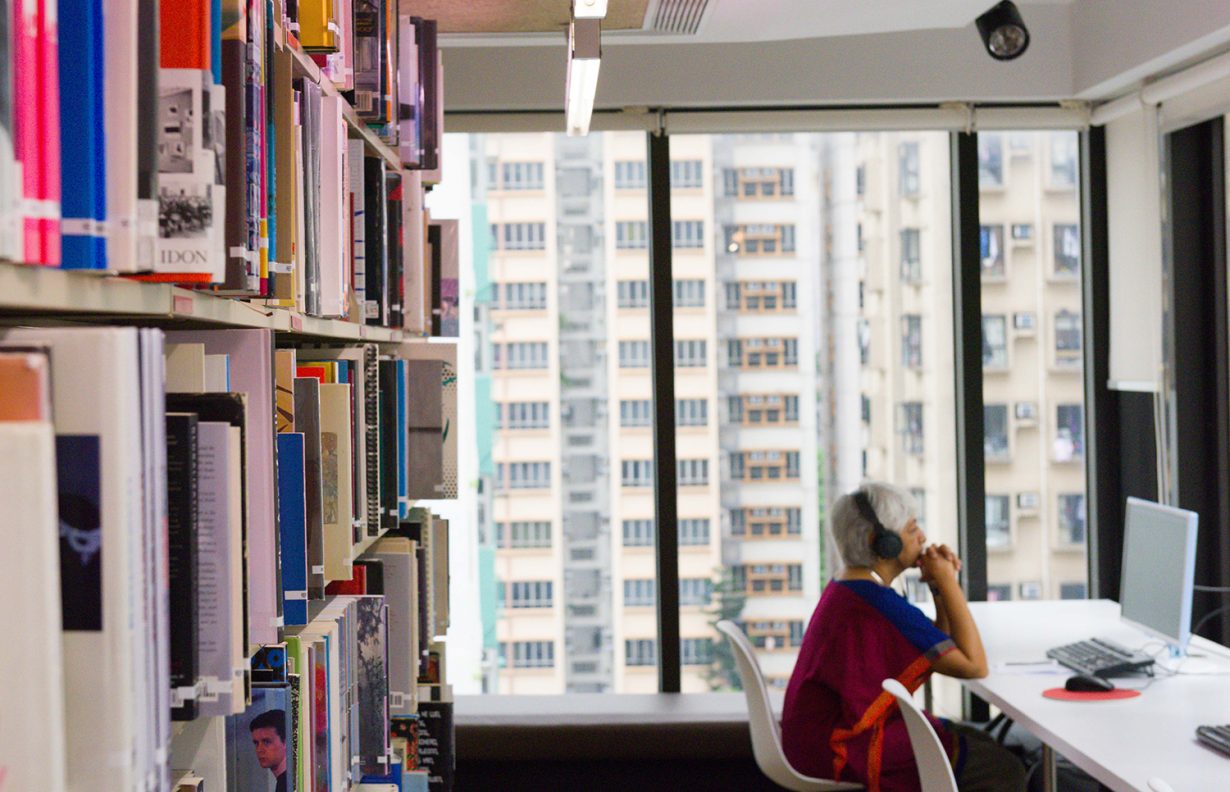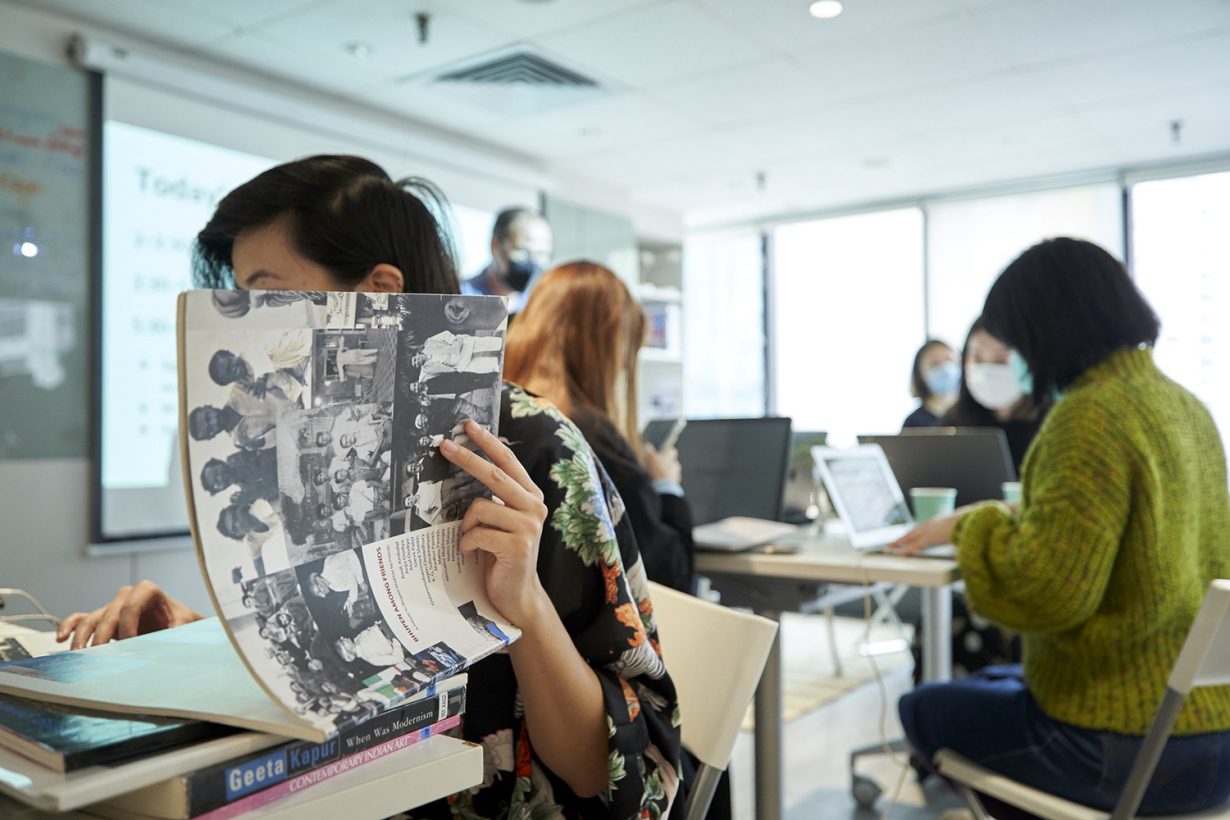Claire Hsu is the cofounder (with Johnson Chang) and executive director of Asia Art Archive, a non-profit organisation based in Hong Kong that aims at documenting, making public and activating the multiple histories of art across the continent. This past December marked the 20th anniversary of its founding and the moment at which Hsu is stepping down from her role as director of the organisation to become co-chair. A search for the new ED is underway.
ArtReview Asia You’re leaving your role as executive director at the AAA as the organisation marks 20 years since you cofounded it. Why now?
Claire Hsu I’m thinking about the future of the archive. Part of that is thinking about how to make sure that it can be led by different people, that it can be independent, that there is a natural evolution. It’s been a very personal project. This is what I’ve been doing for most of my adult life.
ARA Independent of what?
CH Independent from me. I’m still going to be here to support and evolve in my new role as co-chair, but I really want to be able to make space for new ideas and energy. I’m someone who very much follows intuition and the same voice that led me to co-found the organisation is now suggesting that it is time for the organisation to evolve in this way. AAA is in very good shape and I really feel that it is important to bring in energy that will expand what we have built in exciting new ways. At the same time, Jane DeBevoise, our Chair of 15 years and co-chair of two years will be stepping down from this position (although she will remain a board member and chair of AAA in the US) for exactly the same reason.
ARA Perhaps this is a time to reflect on why you started the AAA in the first place and what has changed about it and your vision for it over the past two decades. Does it fulfil a different role now to the one it originally did?
CH In some ways, the beginnings were serendipitous, in the sense that I was twenty-four, when I started the AAA. There had basically been an ‘Aha!’ moment when I was living in Beijing in 1993 as a student in my gap year and I came across the Beijing East Village [an avant-garde artist community formed in 1993 in a ‘village’ of low-grade migrant-worker housing; the community was shut down by police a year later], which was next to where I was studying at the time, and it just blew my mind – seeing all of these artists creating very edgy art. I was seventeen at the time, and didn’t realise who they were until years later. It dawned on me, then, that there were so many different facets to China I hadn’t learned about. I carried that with me through my BA and as I did my MA in History of Art focused on traditional ceramics and Chinese ink-painting. Through all that I retained this very vivid memory of that encounter and wanted to gain a better understanding of what was happening in terms of contemporary art in China. I couldn’t understand why the experimental art being made in China at the time was not being discussed at university or shown in art spaces in London.
In 1997 I did an internship at Hanart TZ with Johnson Chang, during the summer of the handover of Hong Kong, and I started to put together the gallery’s archives. By the time it came to writing my dissertation in 1999, my professor reluctantly agreed to let me write on the art of the 1990s. I remember saying to Johnson, “I wouldn’t know where to start if it wasn’t for you.” He said, “Why don’t you come back to Hong Kong and set up a resource that documents what is happening?” I packed everything up, said goodbye to my friends, moved back to Hong Kong, was given a desk at Hanart and began writing the vision document for AAA.

ARA I guess that leads naturally to the question of how this transition from thinking about China to thinking about Asia happened because I think, certainly in general historical but also art-historical terms, the context of why these stories might not be around in China is very different to the equivalent contexts in other places. There are, after all, multiple ideas of Asia and it can be conceived in many different ways.
CH As I developed the proposal, I was asking myself “When so much is happening, why haven’t these stories been told?” As I spent the months putting the proposal together, which would then be used for fundraising, and gathered a community around it, it became clear that there were many countries in Asia in which ground breaking things had been happening in the artworld and about which very little was known. Both internally and externally. So it became clear that what I was interested in was more than a national history. Asia, as you say, is a very large, expansive, fluid space with countries that might not seem as if they share much in common. But I began to feel that perhaps what they did have in common was a series of unmet needs. I think all of us as human beings have a need to have our stories heard, to have our voices heard, and that takes form in many ways, and art is key to this.
ARA In modern times you can trace ideas about how shared cultures constitute an idea of Asia back to people such as Okakura Tenshin, who had particular notions at the beginning of the twentieth century about the cultural relationships between China, Japan, India and the rest of Asia, and the ways in which they informed political relationships. Such ideas are proposed, disposed of and then revised repeatedly. But perhaps culture plays a central role in these visions of place because it’s the one thing that people would like to think they share or exploit to define themselves.
CH Absolutely. There’s this notion that everyone is looking for a shared or an imagined community, right? I think Asia as a space allows us to explore this idea and then of course, when you start going deeper into that, it changes its form all the time. Each country’s history is different but there are also commonalities, continuity and rupture: in terms of recent colonial histories and encounters, for example, in terms of oppressive governments, but also in terms of the flow of ideas, beliefs and materials over centuries. As you say, Asia is constantly being shaped and reshaped at different moments.
ARA So how do you decide what to collect, what not to collect, what to research, what not to research?
CH That was clearly articulated around 2015 when we went through a strategic rethink. It was really looking at certain lines of inquiry that emerged after 15 years of collection building and conversations. We wanted to further articulate and go deeper into these content priorities for the next period of the Asia Art Archive’s life as such. For example, now, we’re looking at pedagogy. Looking at where art history has been written and, in this case who has taught it and how. Looking at particular sites of learning, or universities that have played a very important role in developing these narratives. If we’re looking at how these are represented within the collection we’ll realise we’ve done a lot for Baroda, for example. Or on Roberto Chabet in the Philippines. Then we’ll ask what are the other stories that could add to the way we think about pedagogy? Where is it that can offer other case studies, entry points and examples?
Also the organisation is made up of individuals with particular interests, passions and areas of study, and the organisation shifts according to different people as they come in. They will bring in their own expertise which will obviously lead certain conversations while also bringing them back in line with our content priorities. I’d definitely say it’s the team at the AAA and the wider community around us that shape what we collect.
ARA In terms of pedagogy, for example, are you taking the research beyond the realm of the academy?
CH We’re taking it beyond the academy, but an actual physical archive has to exist for us to be able to do that work in terms of collection. If it doesn’t, then we have the platform of our programmes to ask some of these questions.

ARA So I guess the nature of the collectionpresupposes that a certain amount of structure – in the form of some sort of archive – already exists. And that, in itself, is the product of certain choices about what to preserve and what to ignore.
CH Yes, no archive can include everything. That’s why we have always advocated for multiple archives. For anybody who wants to set up an archive, who wants to train with our team, who wants information, we provide so much because we’re always advocating for multiple archives to be set up. We realise that we can’t do it all and there’s no way that we can represent everybody within the archive. Also, we have to remember that the archive is living and that it will keep changing and it will keep responding as new archives come in. You can call it ‘gaps’, but I see it slightly differently: as we shine light on one story, it then lights up trails in other directions. The archive is constantly unfolding. We’re going down this path that we think that we know, and then something else gets opened up.
ARA In a sense you’re being responsive in that way, there are choices and I guess there’s no sense in which the archive would be neutral?
CH No, I don’t think so. I was thinking about this: we used the word ‘neutral’ naively at the beginning. Maybe now, a better way to articulate it or to think about it is that as human beings, we’re all shaped by our memories and these memories are linked to our experiences in this world, what we’ve learned, what we’ve been told: that’s how we come to the world, and that’s how we experience the world. It’s less about being neutral and more about not thinking that your perspective of the world is superior to others. It’s about a generosity – so different points of view can coexist.
ARA I think this leads us to another question: I guess over the past 20 years, an organisation that was initially designed to ‘fill a gap’ as it were, and that existed outside the ‘official’ structures and geographies of global art discourse has grown to become a part of that structure. Does that change the way you choose to operate it?
CH I’m not sure I would agree with that. I still think a lot of the histories, a lot of the archives that we have digitised and made accessible are not necessarily well-known. I’m not sure those histories have yet been officially written. They are not the stories we tell our kids about the artists of our world.
ARA It often seems as if contemporary art is an ever-expanding field, not so much the result of a discrete practice but something that flows into and out of various other disciplines. What is ‘art’ for AAA?
CH I think arts at AAA is not defined purely in terms of an object; we’re interested in the relationship to where, to why, to with whom it’s being made. Context is very important. If you look at our mission statement, the point of what we do is to enrich our understanding of the world. Definitely, a more expansive definition of art.

ARA Would you include the act of archiving itself as an ‘arts’ project?
CH Yes, we definitely do. We speak about archiving and archives a lot. We’ve done different programmes around it and worked with artists with an archival practice. We continue to do that. We see a growing interest. That’s positive because we want all kinds of archives, including whimsical ones. If that’s indeed even possible.
ARA Have the recent social and political events in Hong Kong changed how you feel about the archive being based in Hong Kong?
CH We’re not leaving Hong Kong. We’re legally set up here; 95 percent of our funding comes from Hong Kong. That being said, the digital collection is not hosted in Hong Kong. In a doomsday scenario, where the physical AAA was closed down in Hong Kong for some reason, the collection could still exist online. I think this year, with the physical space being closed for much of the time we’ve realised how digital we actually are, and how easy it was for us to move to the digital space as well. Our ultimate responsibility is as custodians of these materials that have been entrusted to us and we will do everything we can to ensure they remain in the public domain.
ARA You talked at the beginning of this conversation about wanting to let the AAA evolve. Are you prepared for it to evolve quite radically after you leave this role or do you envision an extension of what’s already there?
CH It is sometimes a challenge for a new executive director to have the founder still involved on a board level, but we are looking for a visionary with shared values, not someone to lead the organisation exactly as is. And I am committed to supporting and enabling the new ED’s vision with the rest of the board.
ARA Looking back on your time as director, what do you think were the biggest successes and the things you feel might have been left unfinished or failed even?
CH I’ve been thinking about this a lot, especially because it’s the 20th anniversary. Every day is a different challenge. That’s what it means to run and build an organisation. We’ve been looking for a new physical home that can accommodate our growing collection for many years which has been very frustrating as real estate is so expensive. The good news is that we have found somewhere and hope to move there and open to the public in the autumn. But perhaps the biggest challenge was actually getting the seeds that we planted 20 years ago to take root and grow. I really see this as an incredible coming together of a community of people that have deeply cared about the mission and have gone above and beyond the call of duty to work hard, to make sure that this organisation not only takes root but flourishes. I’ve had so much support from the very beginning. I’m incredibly grateful. It’s been truly inspiring.
